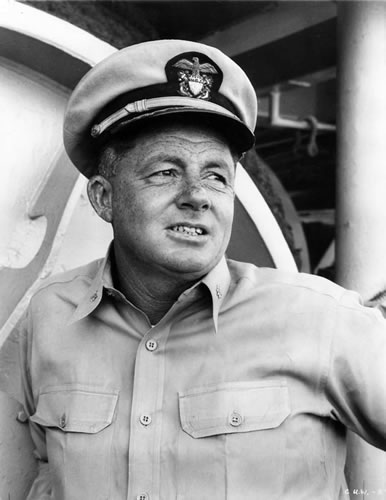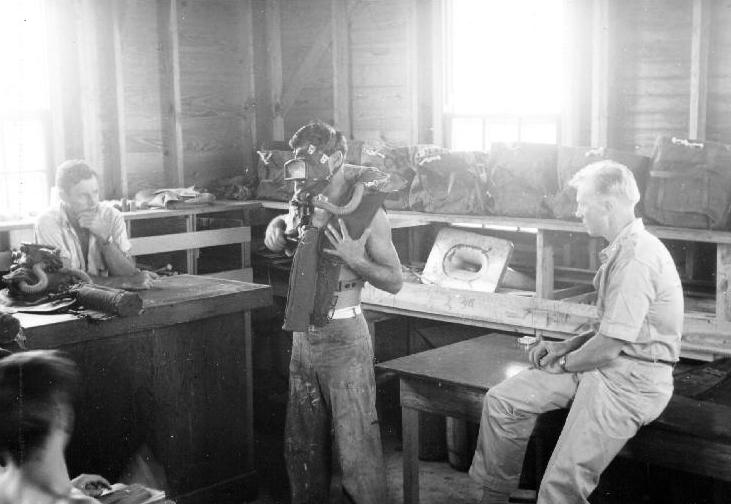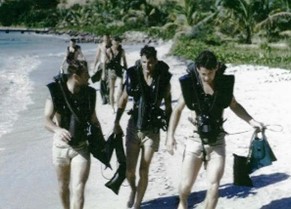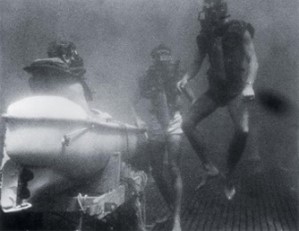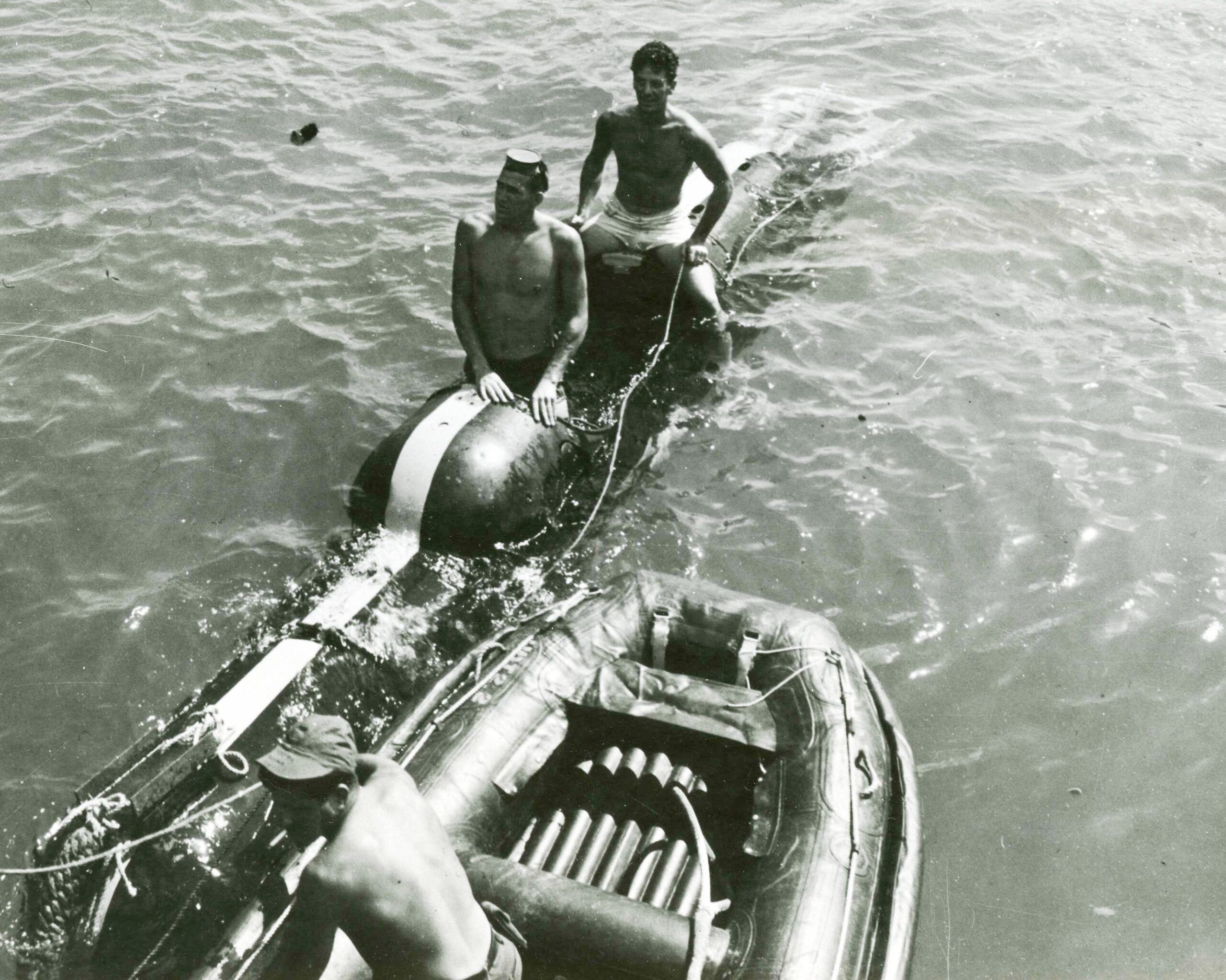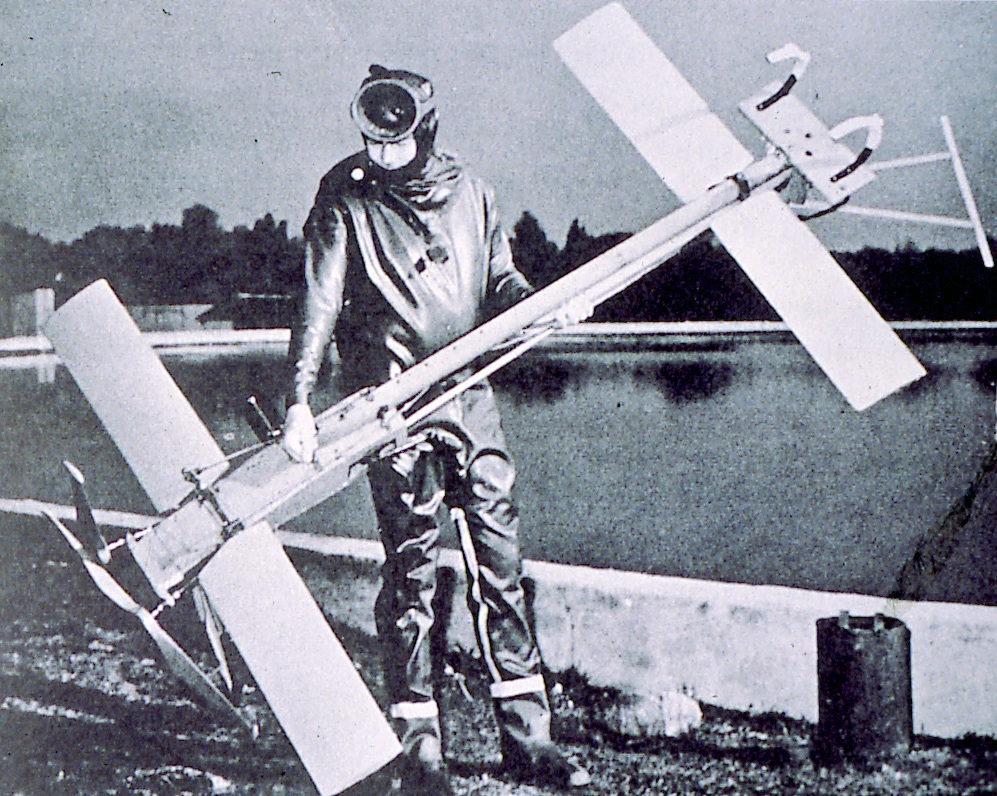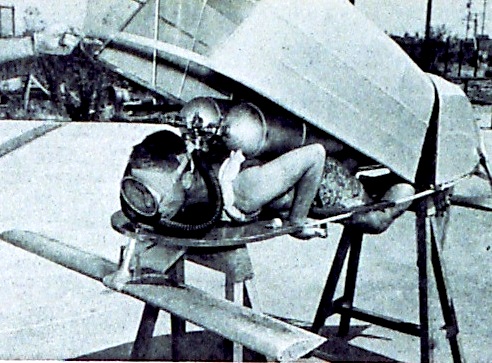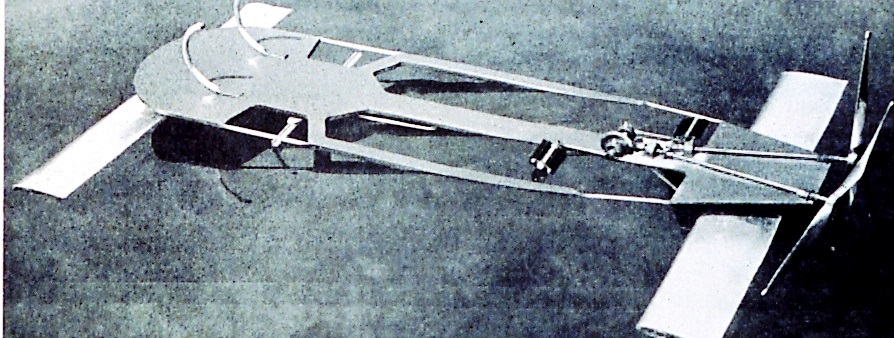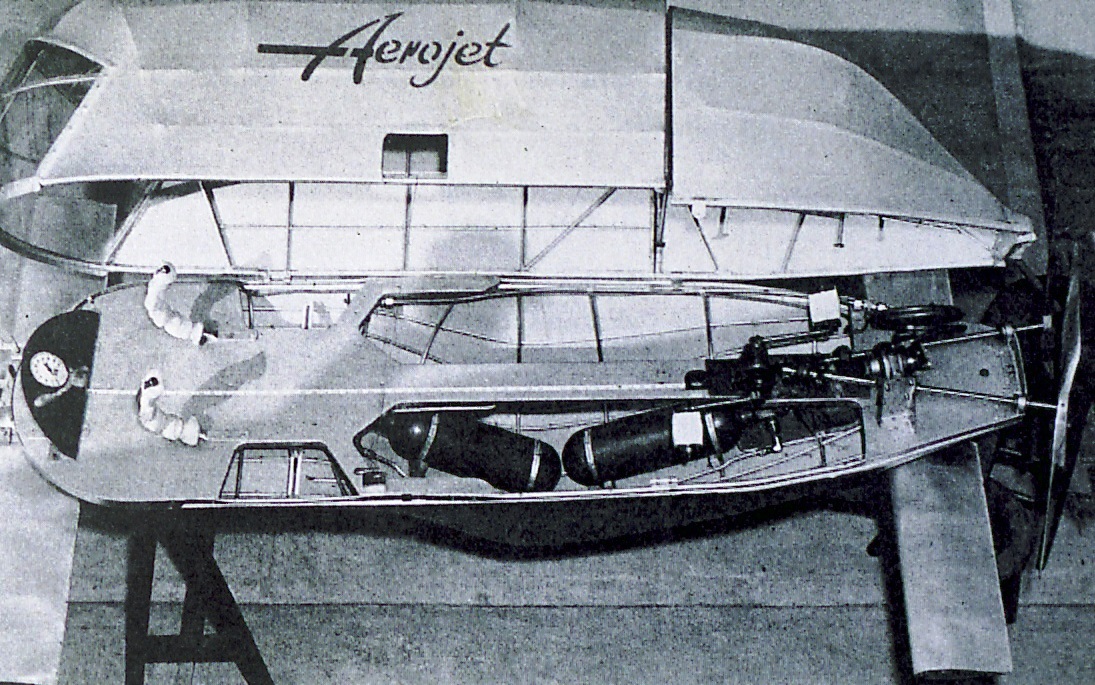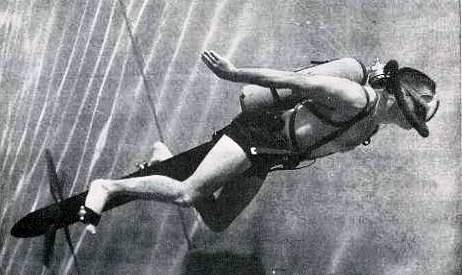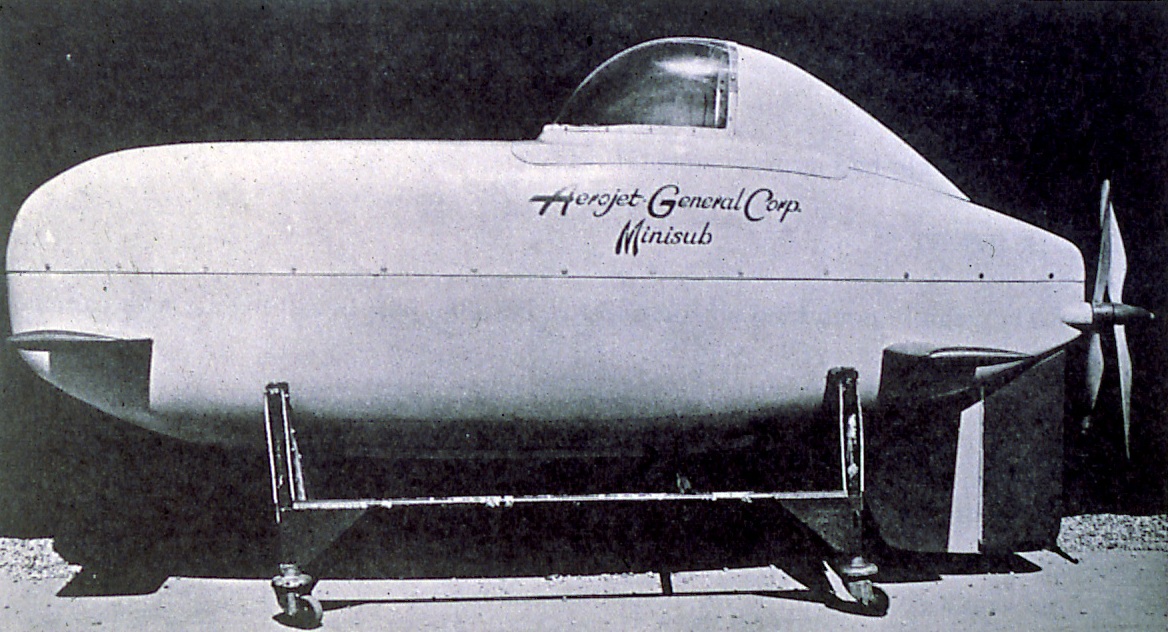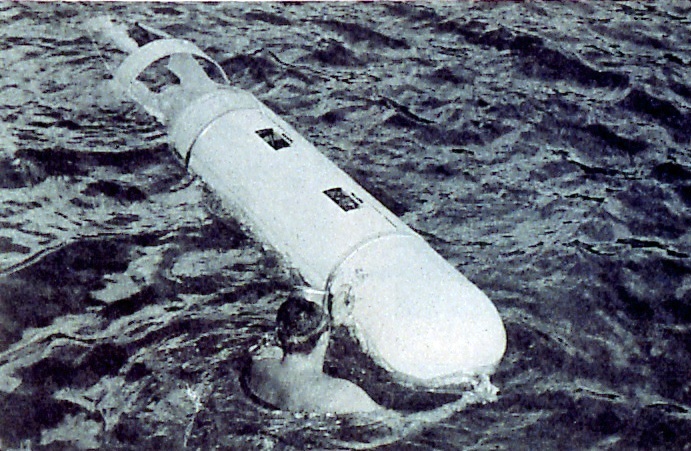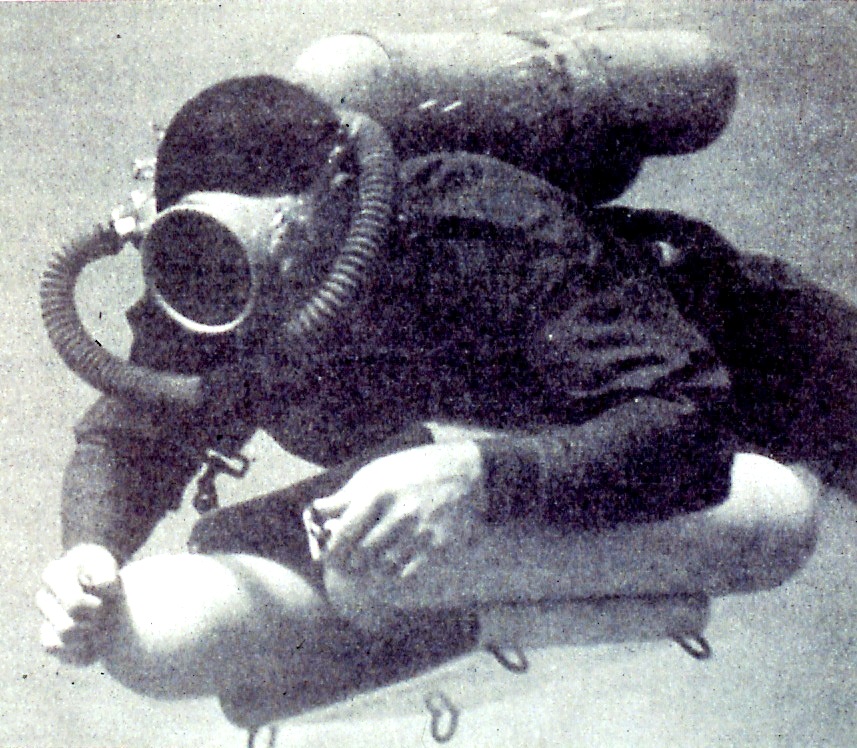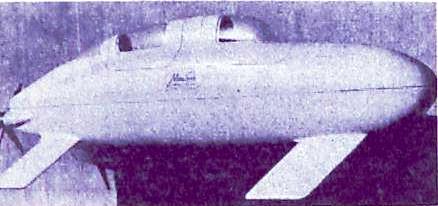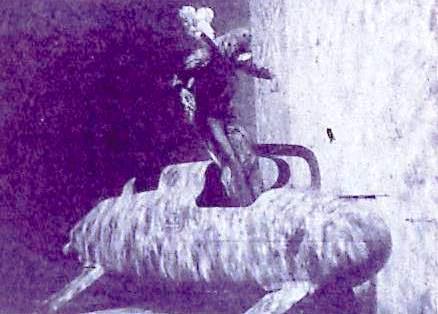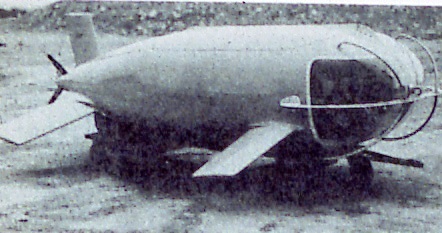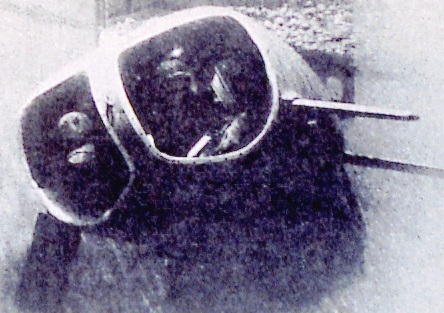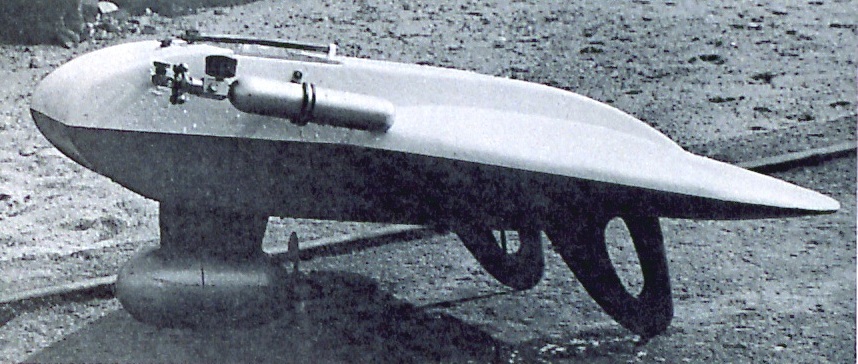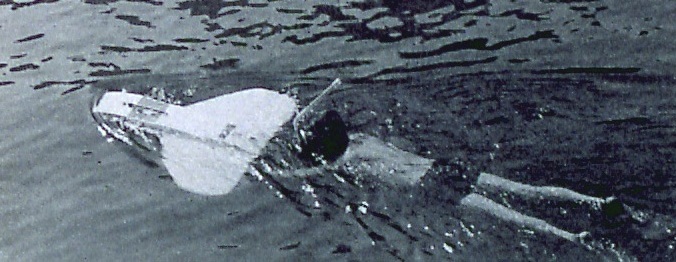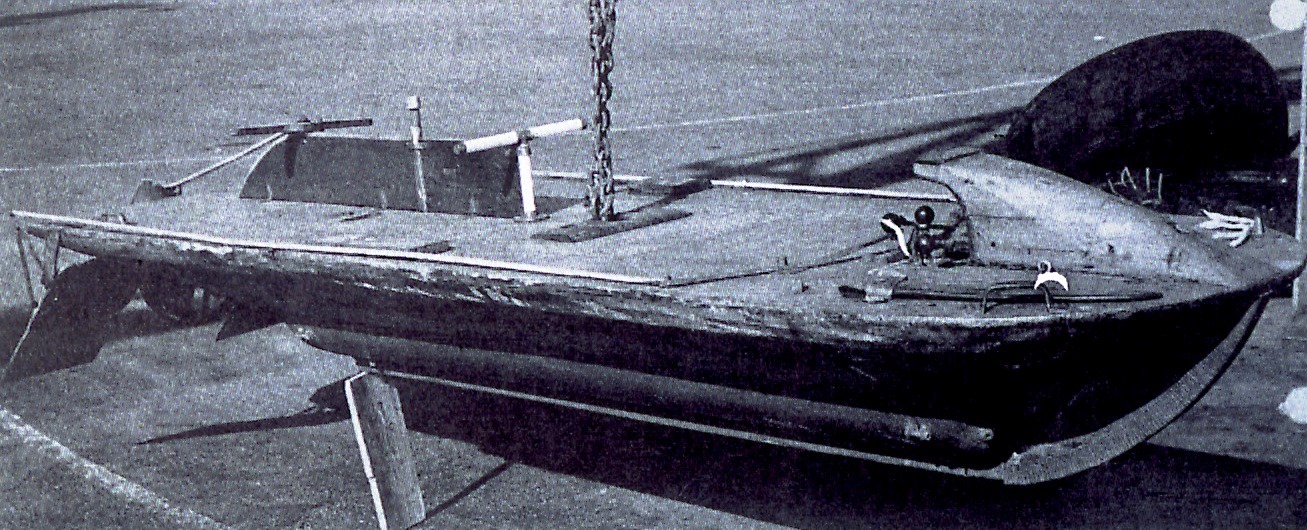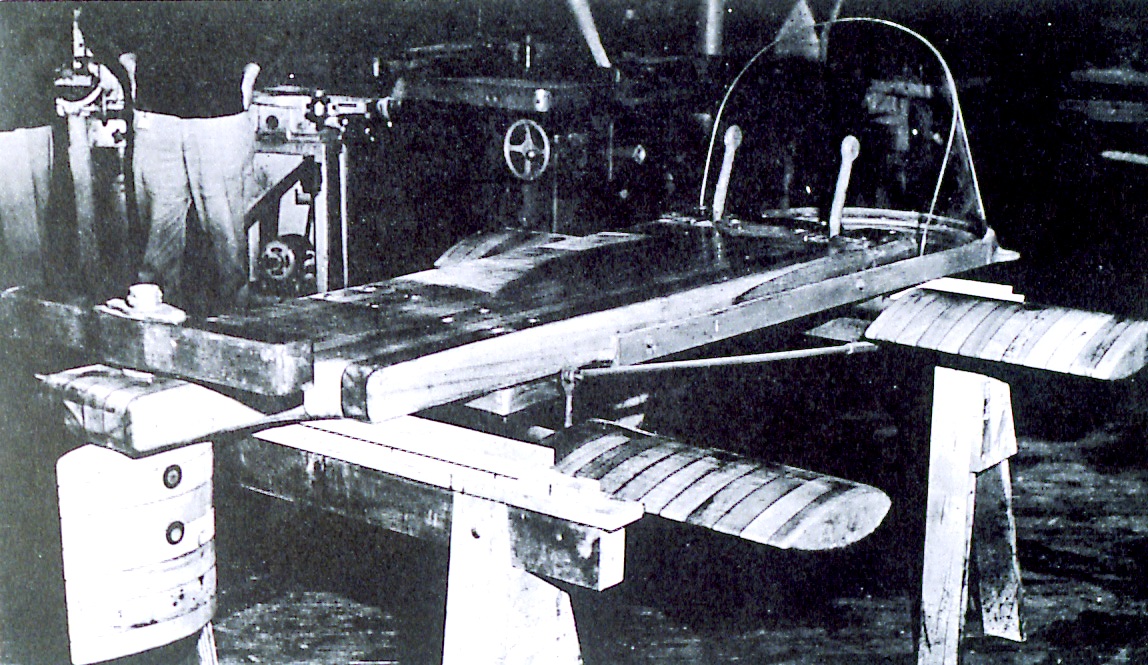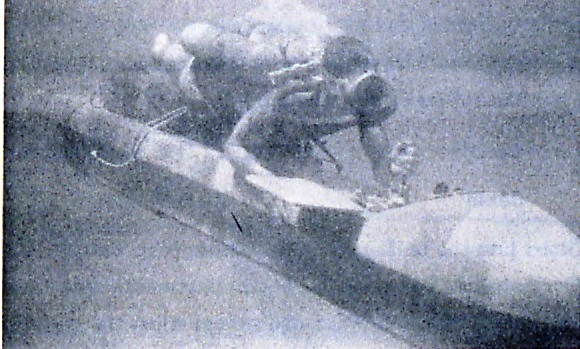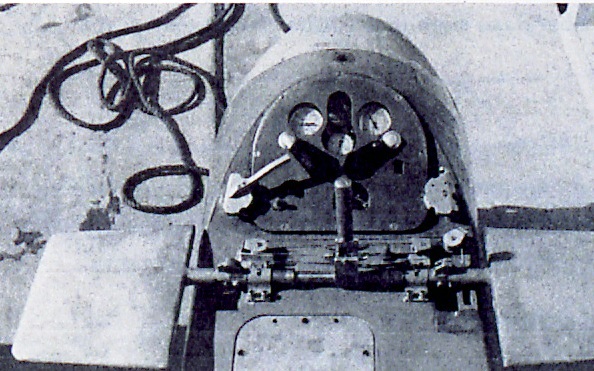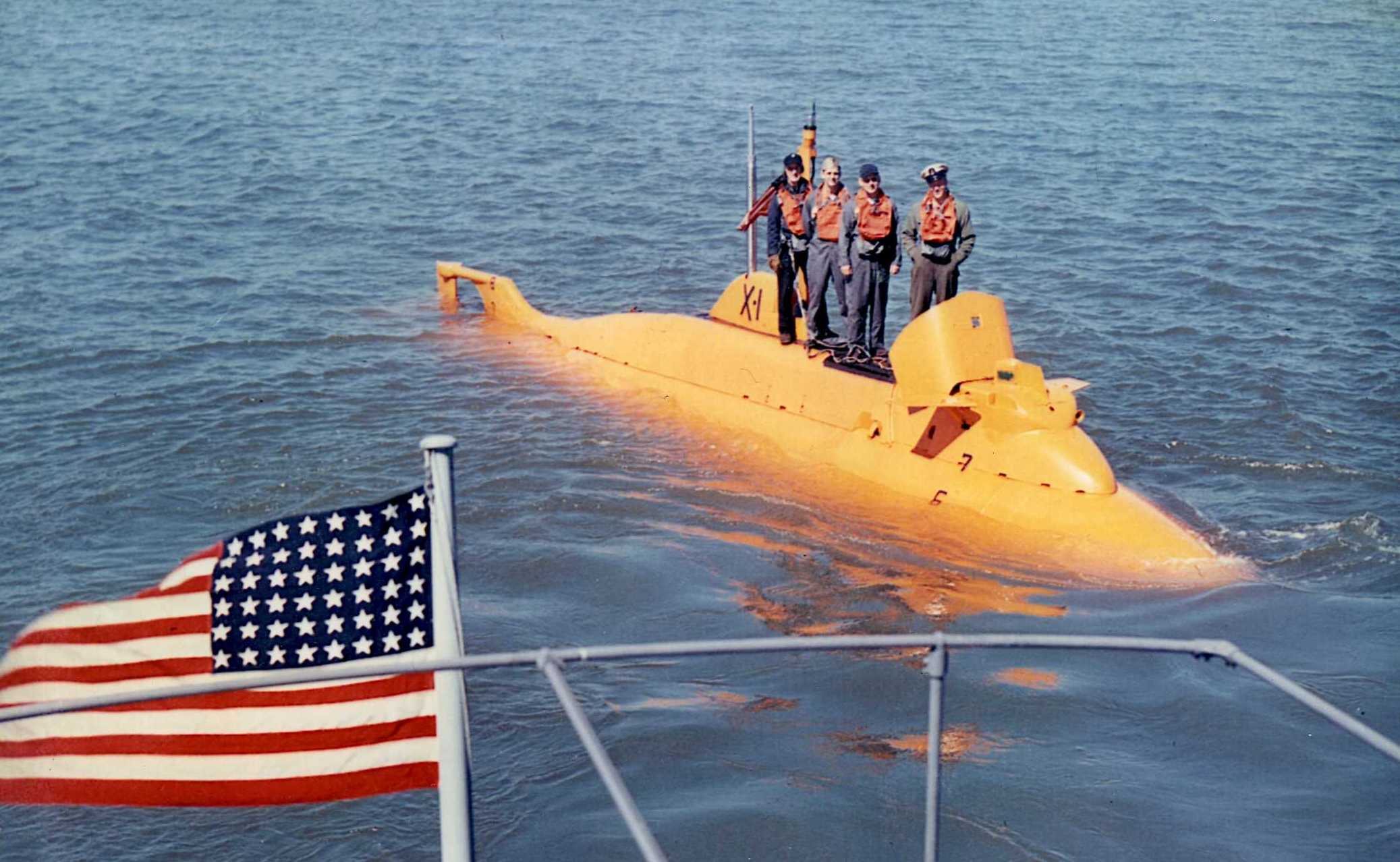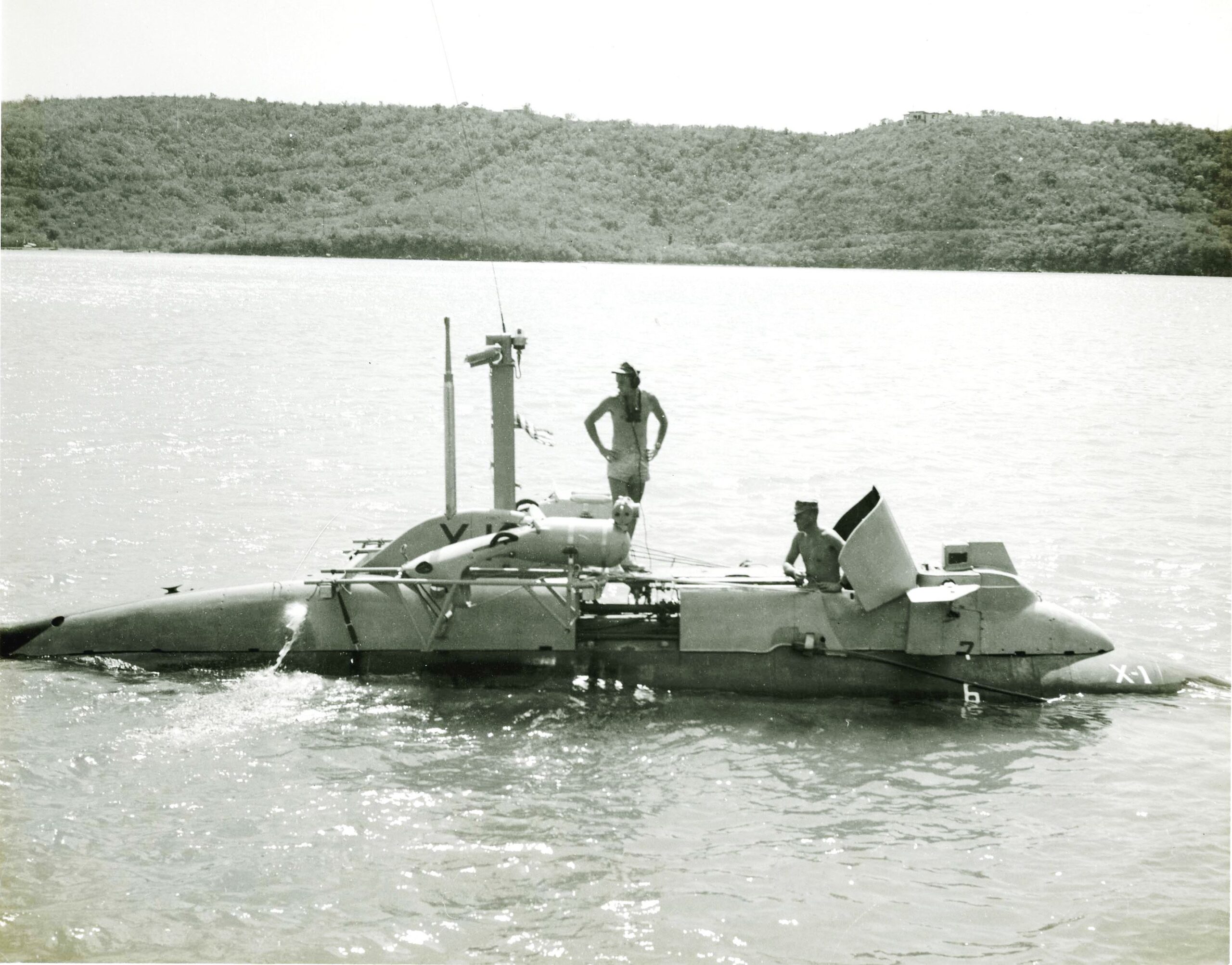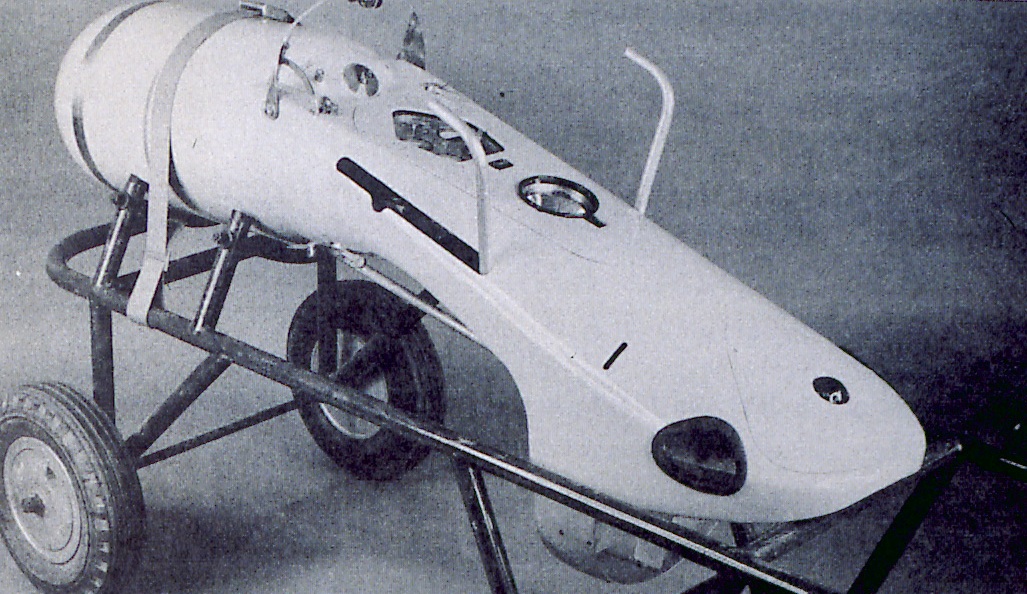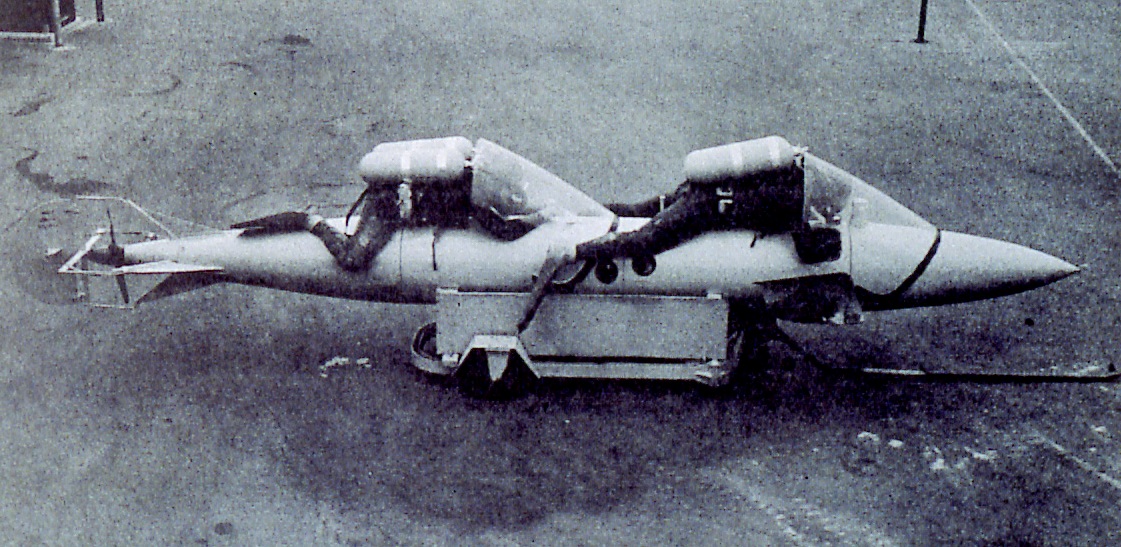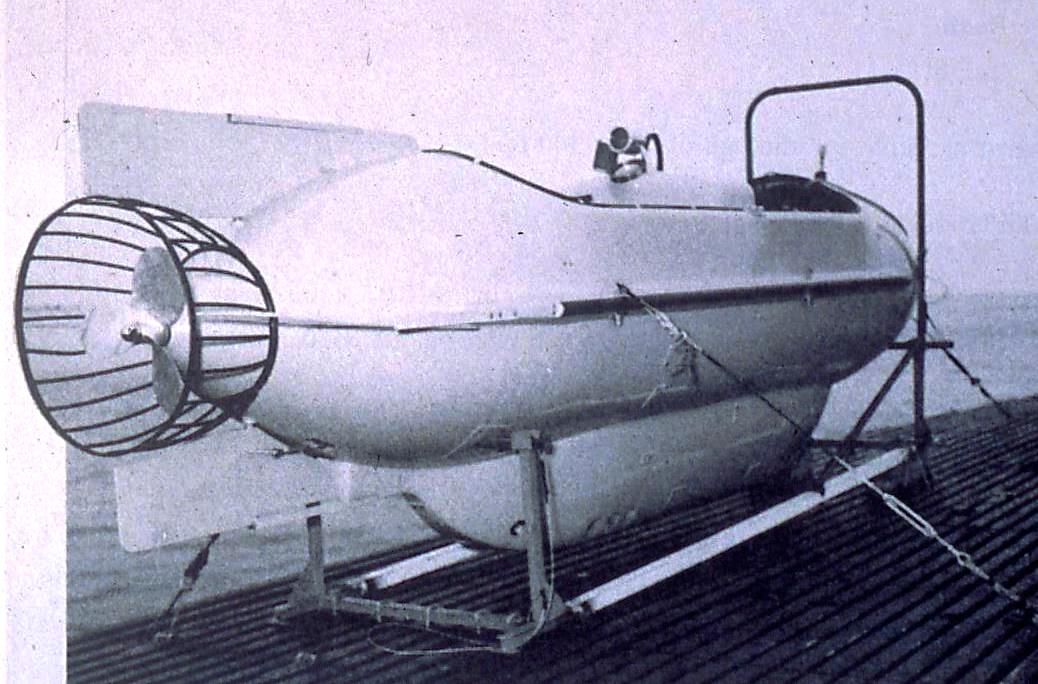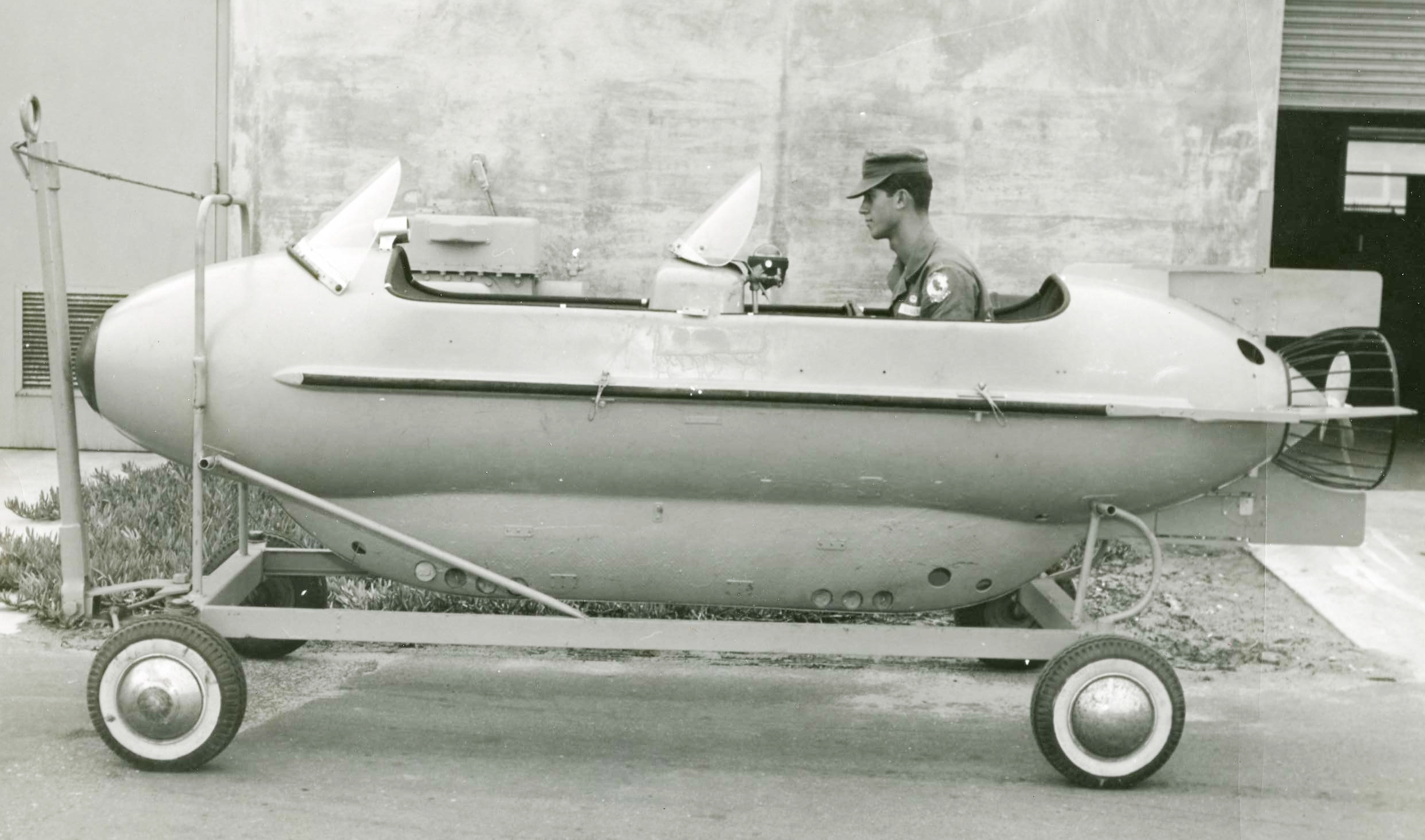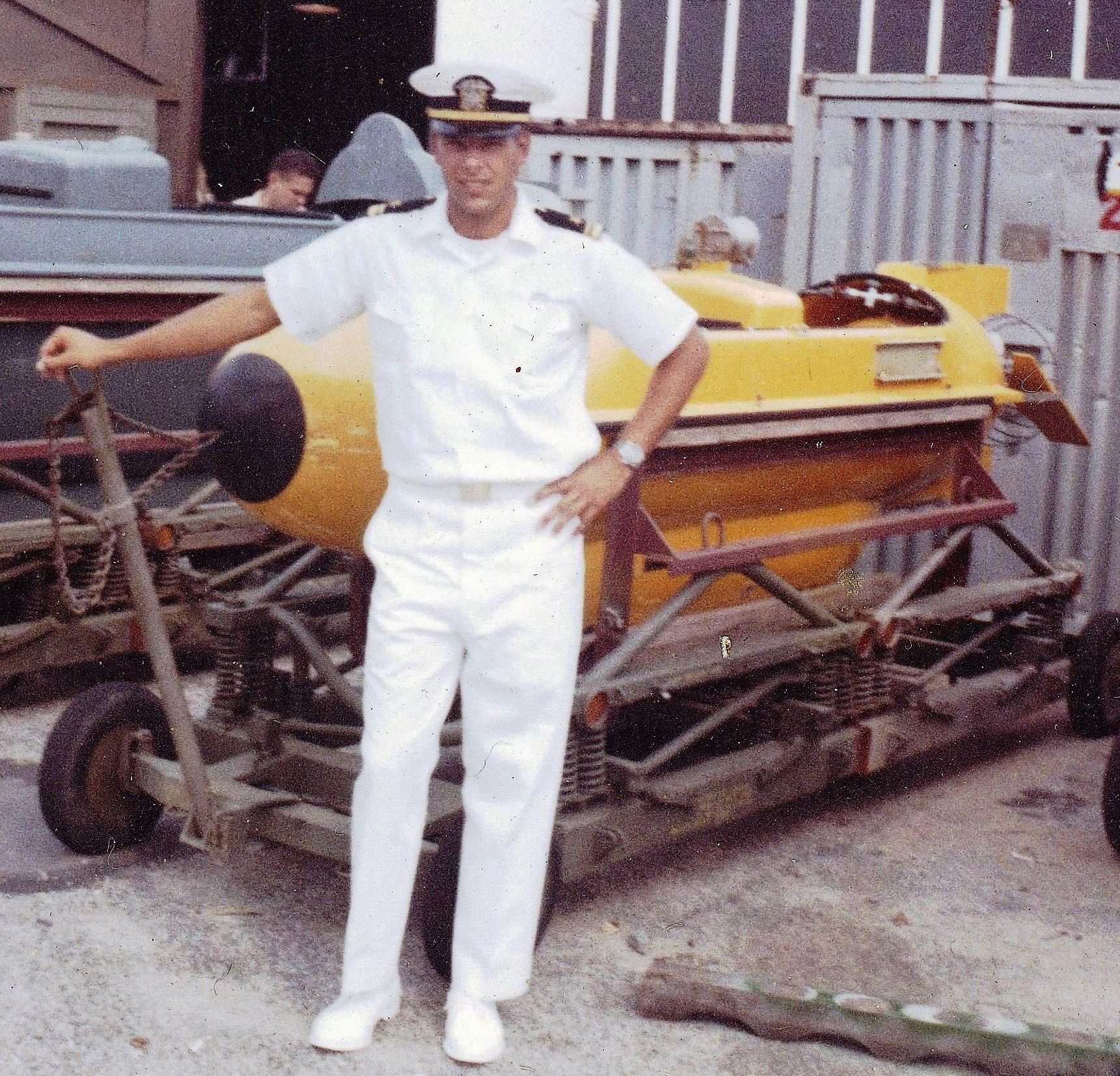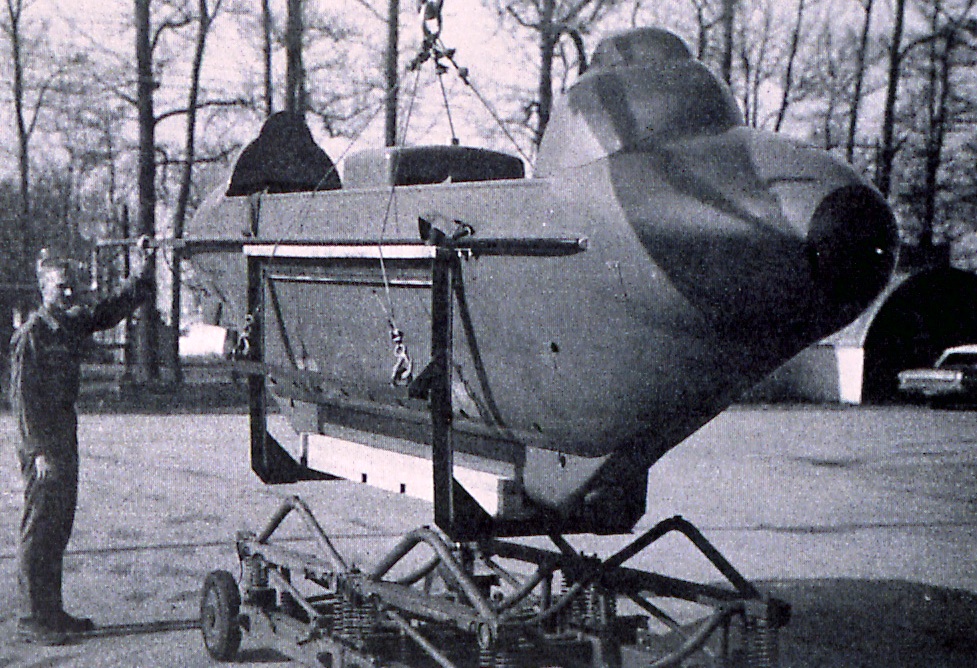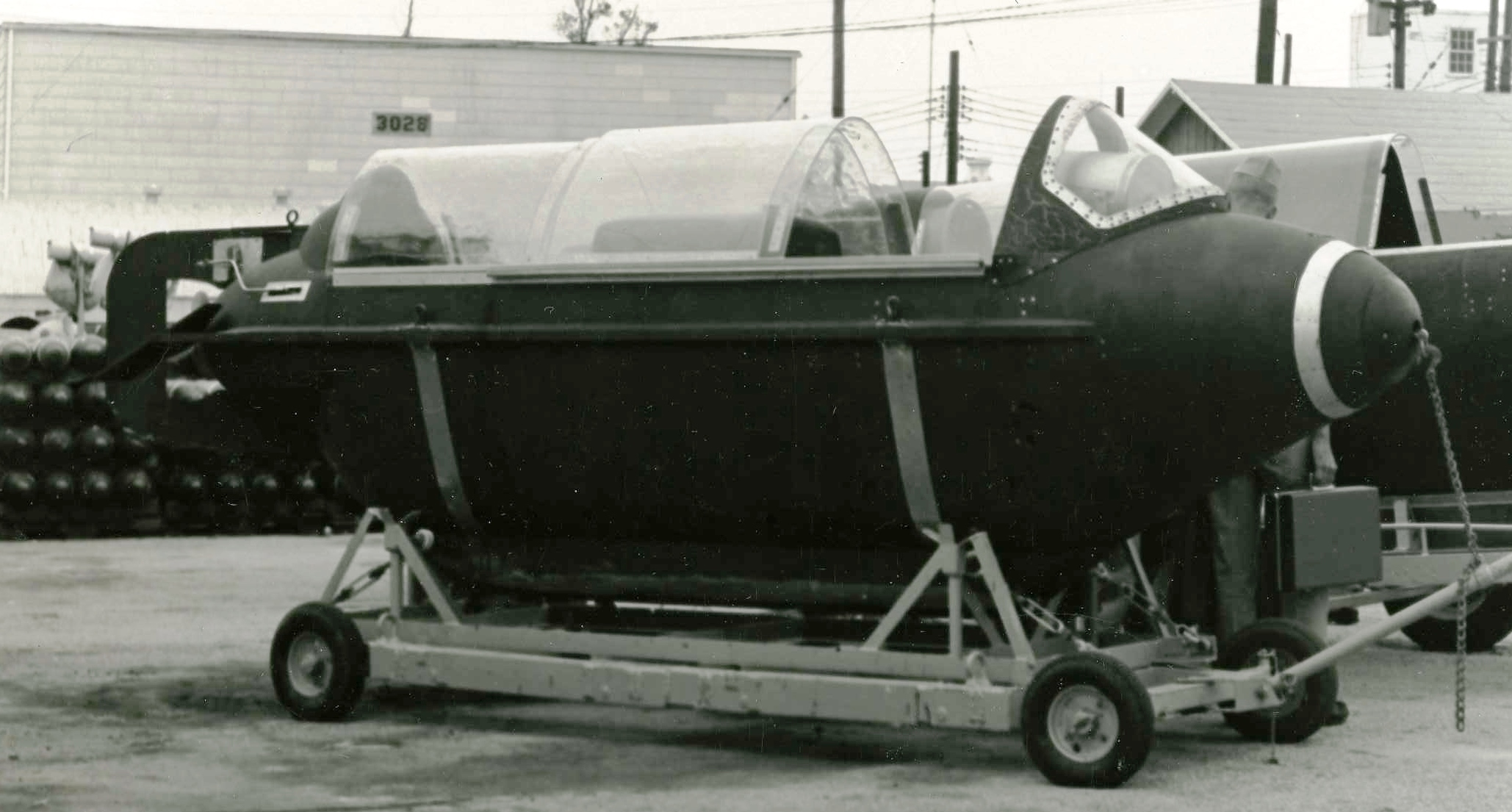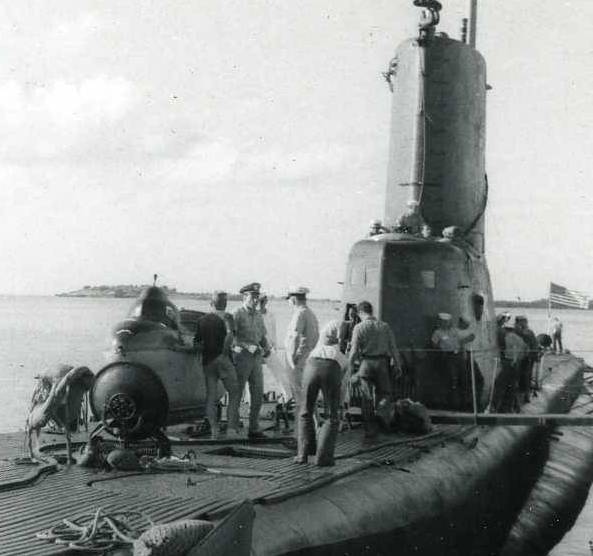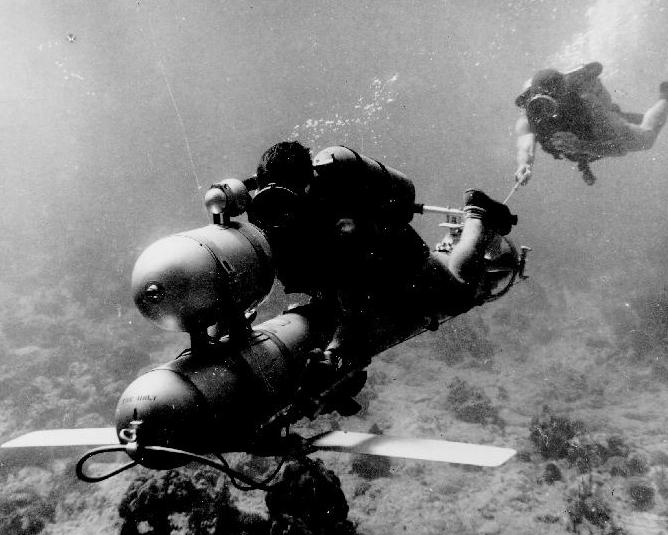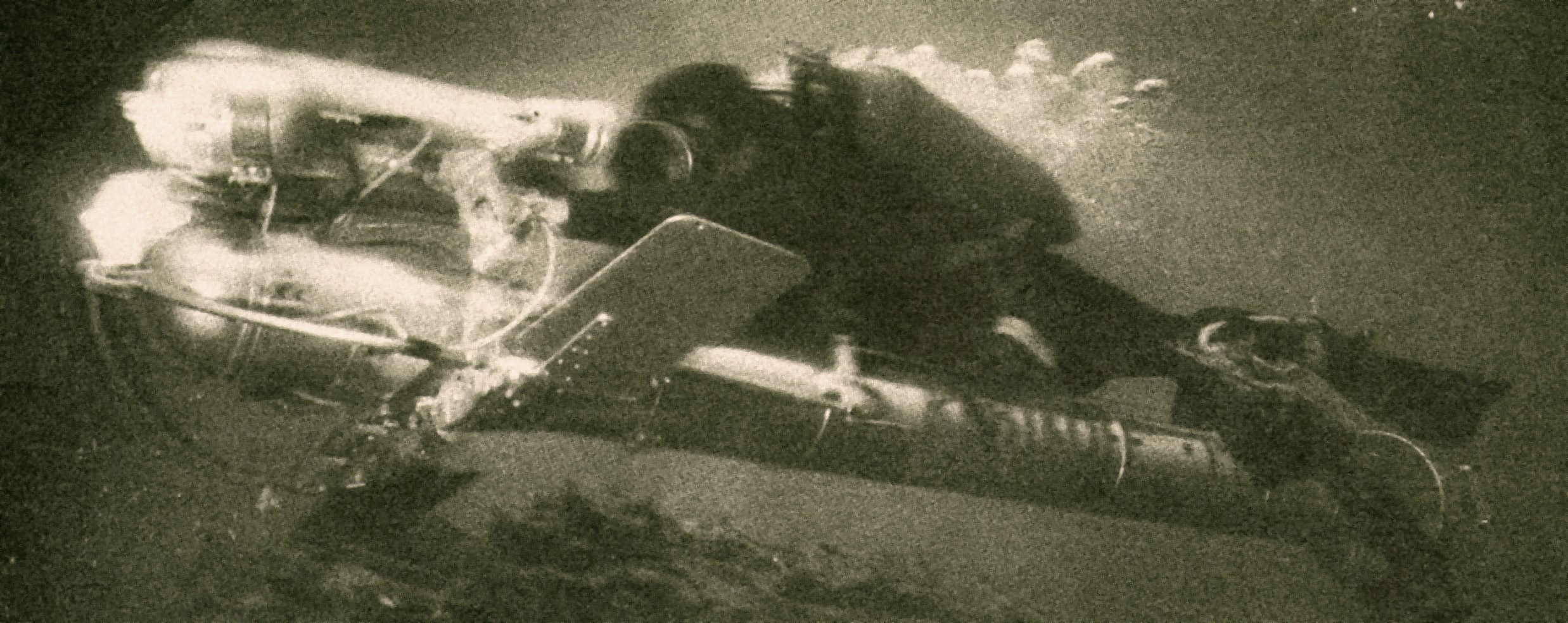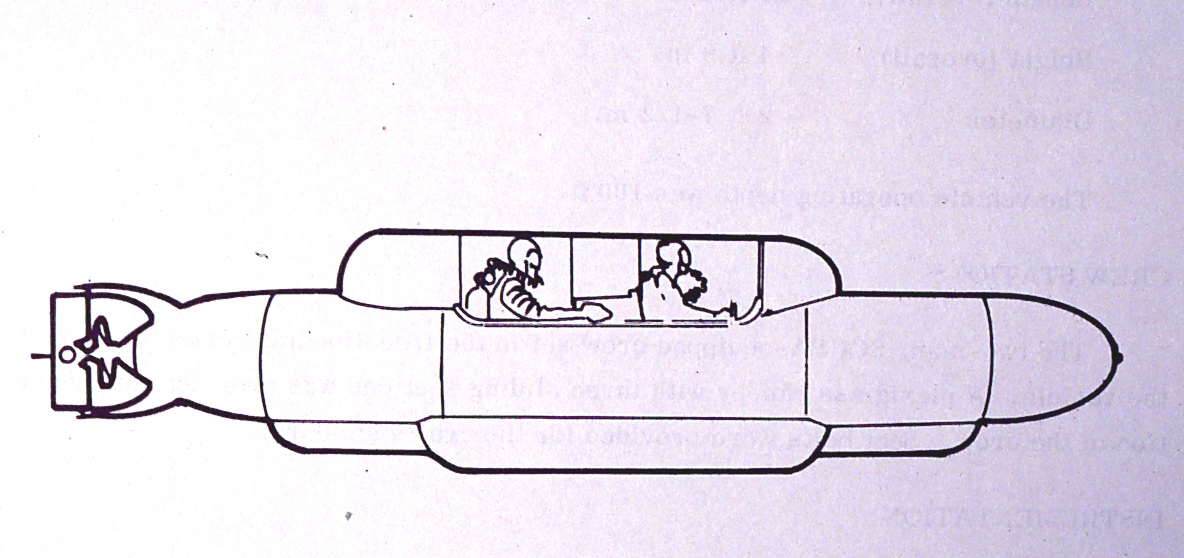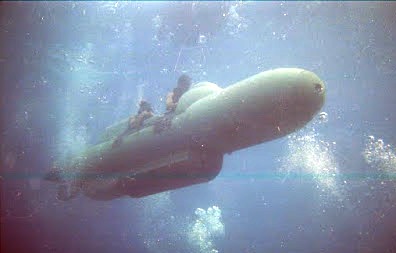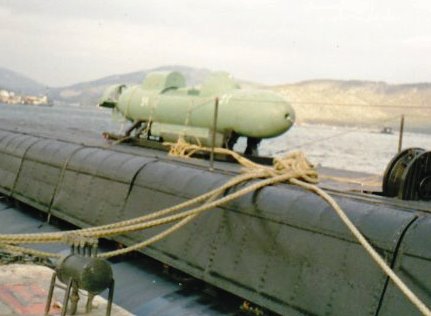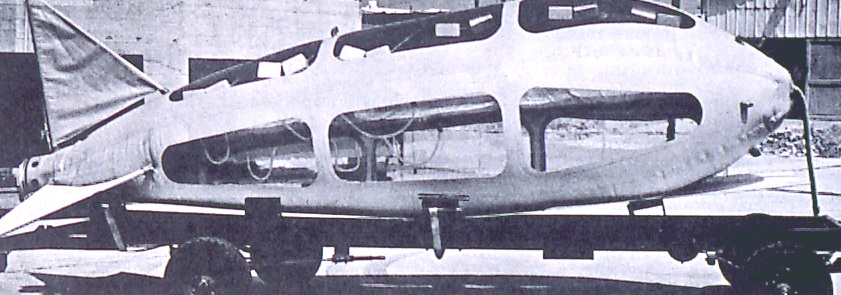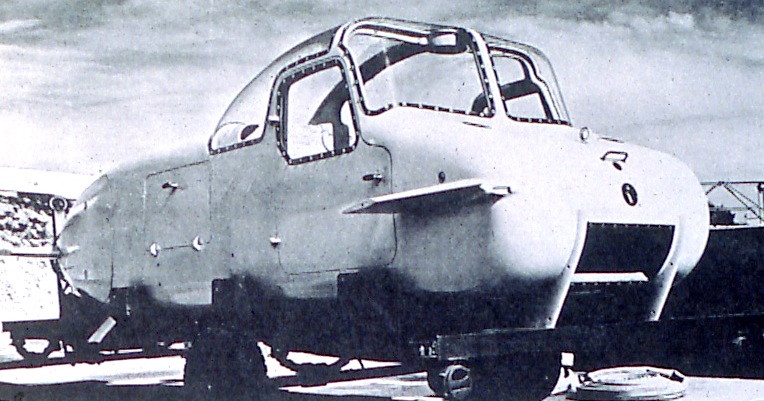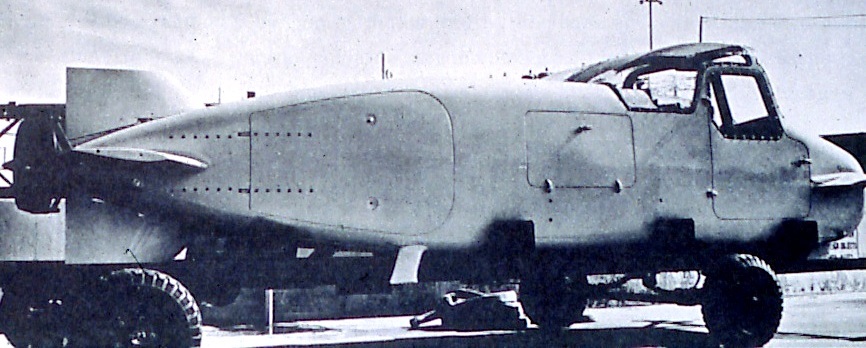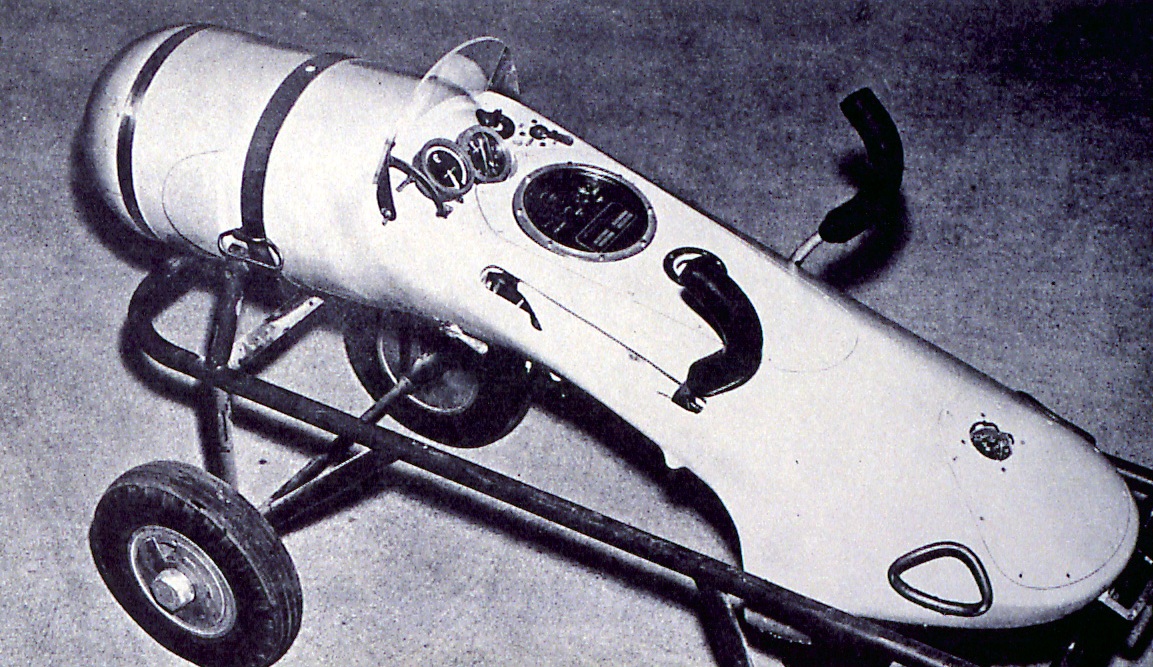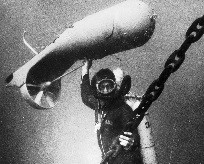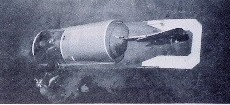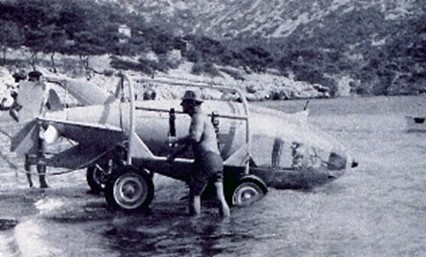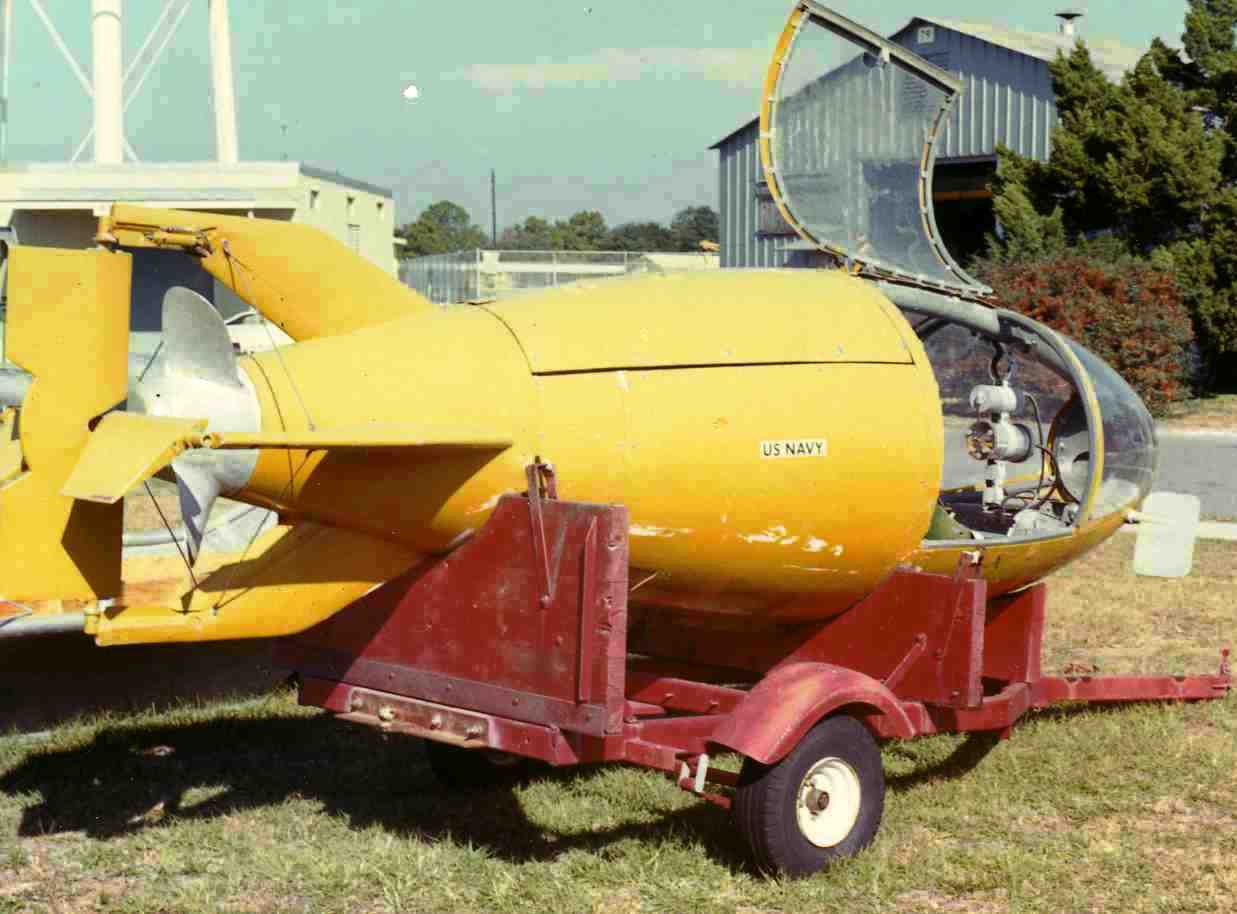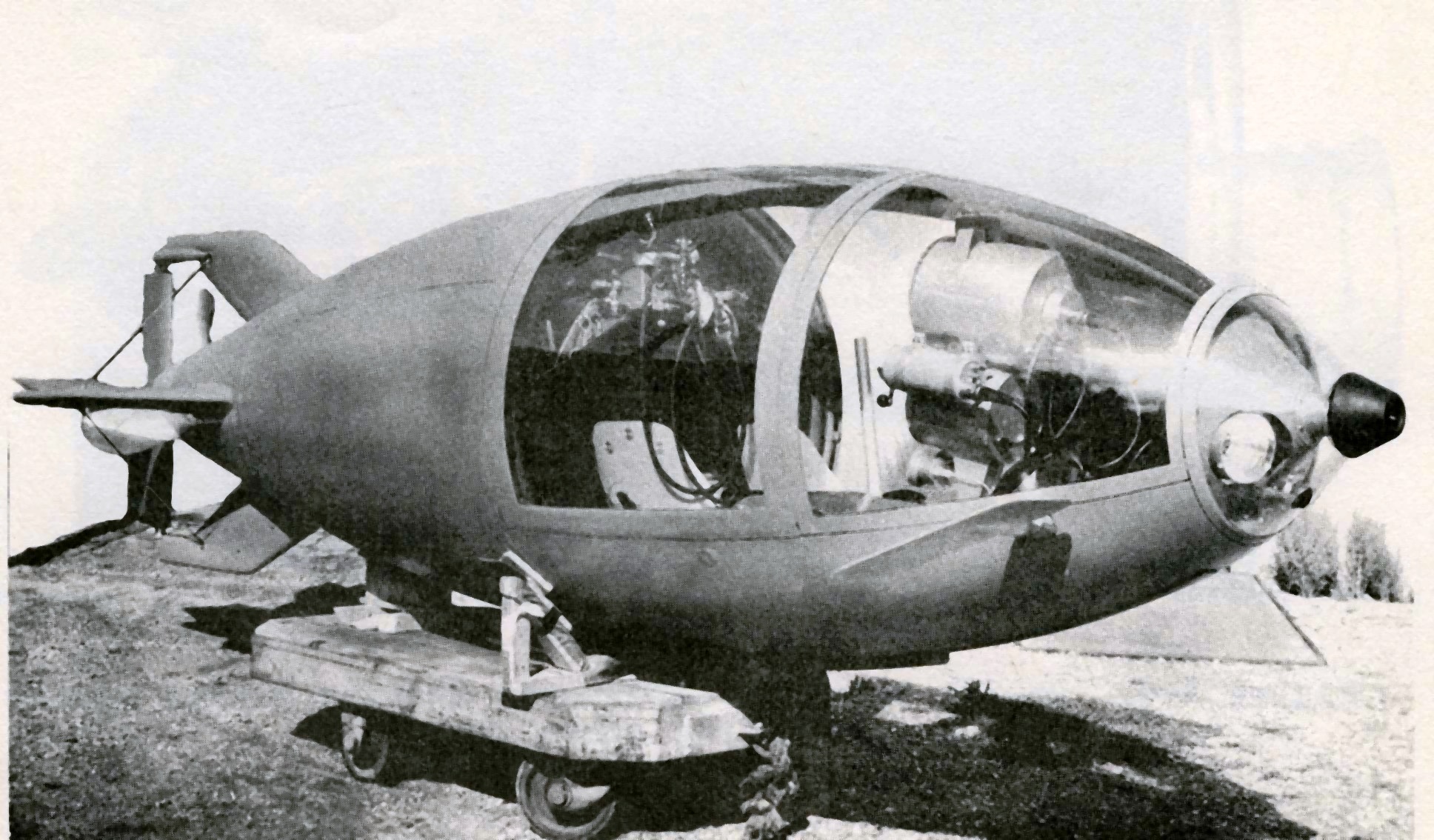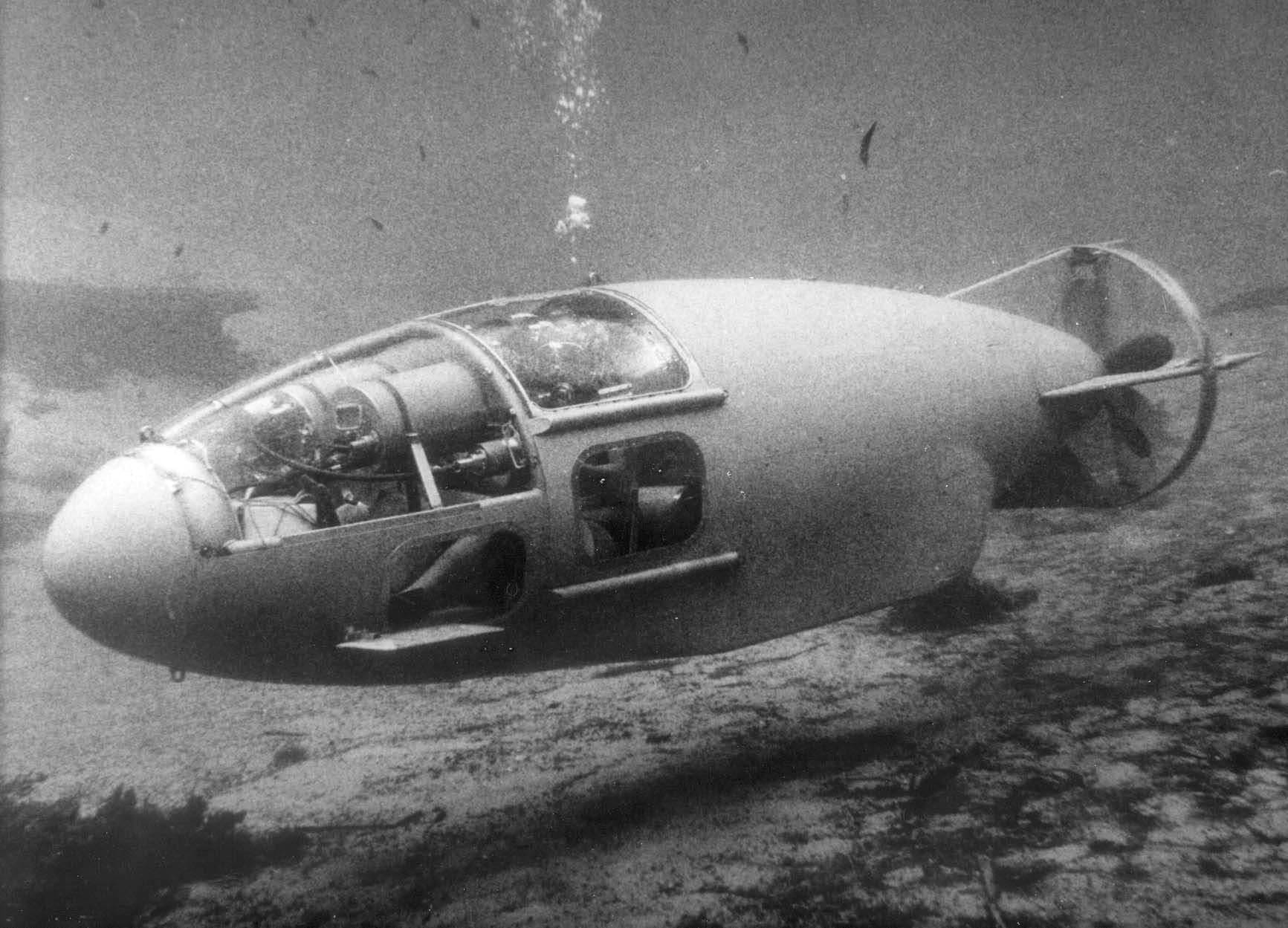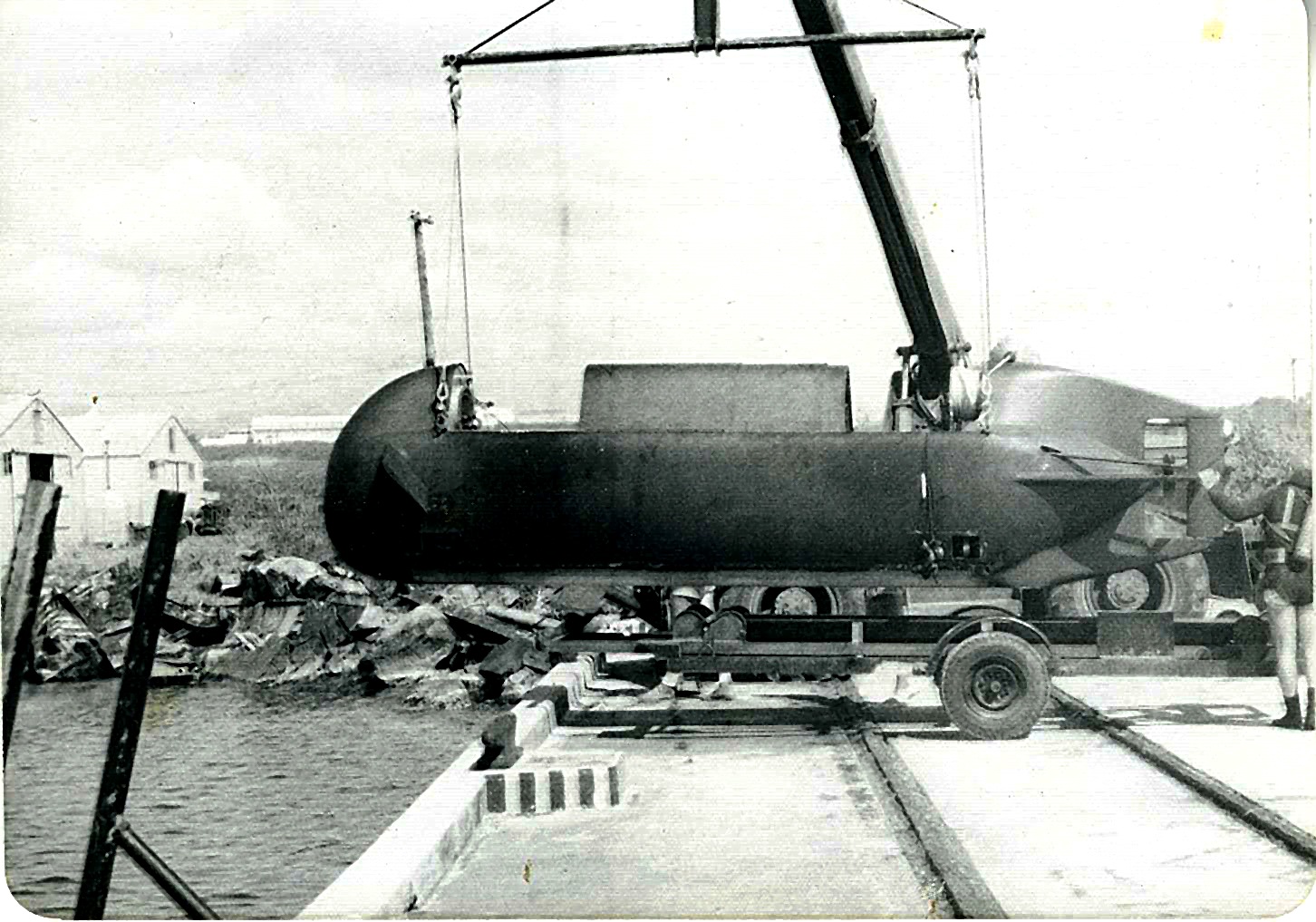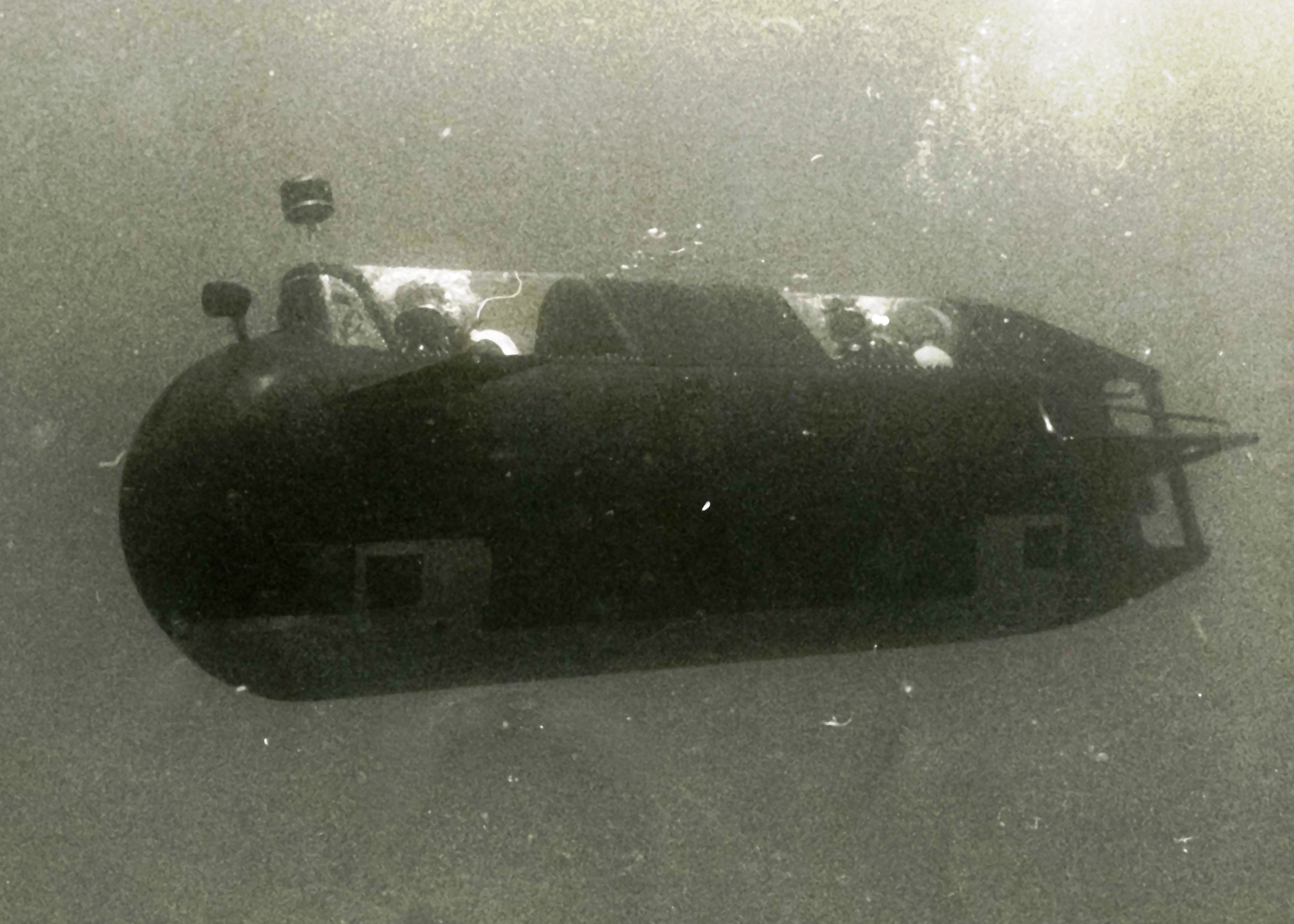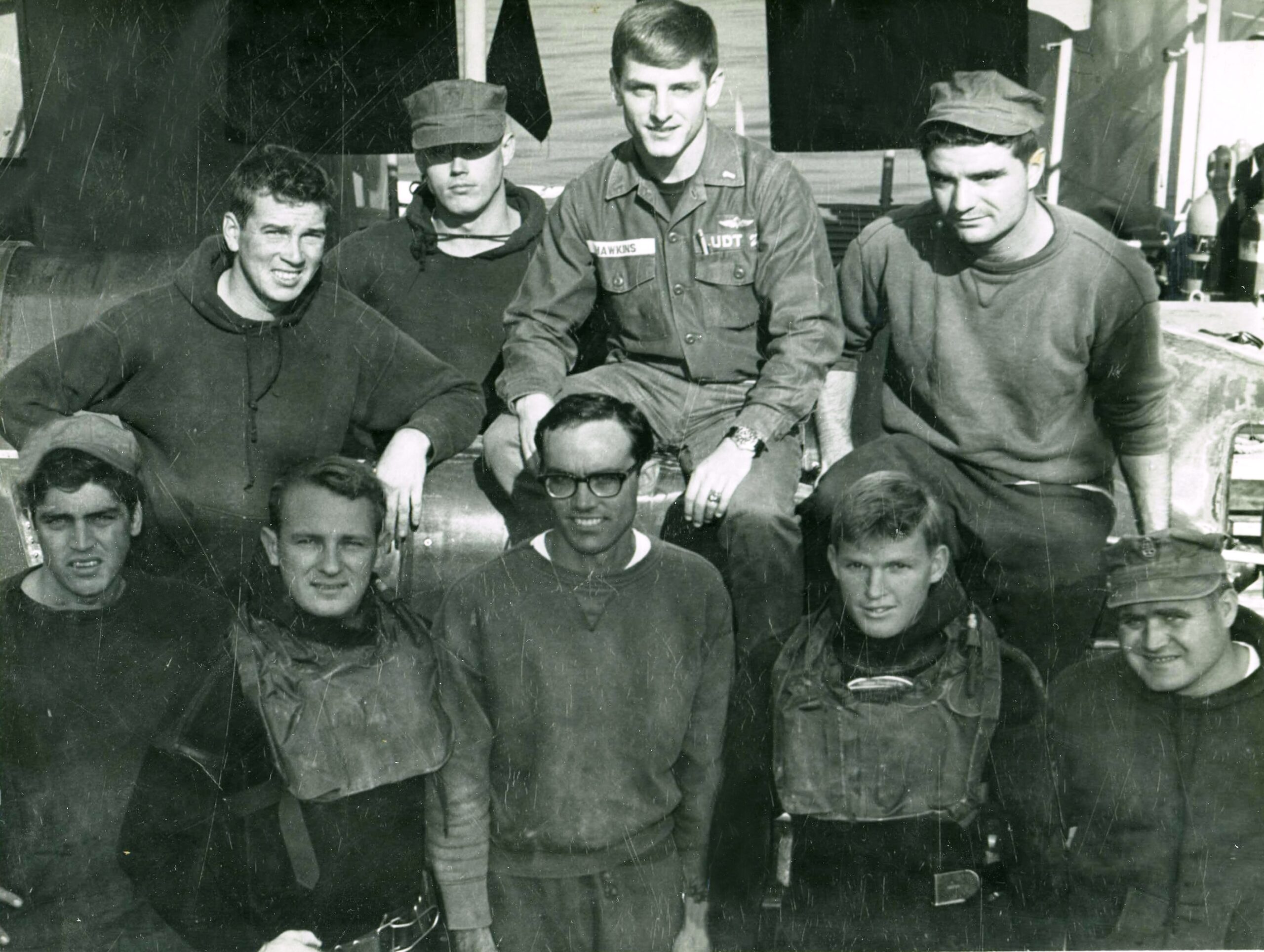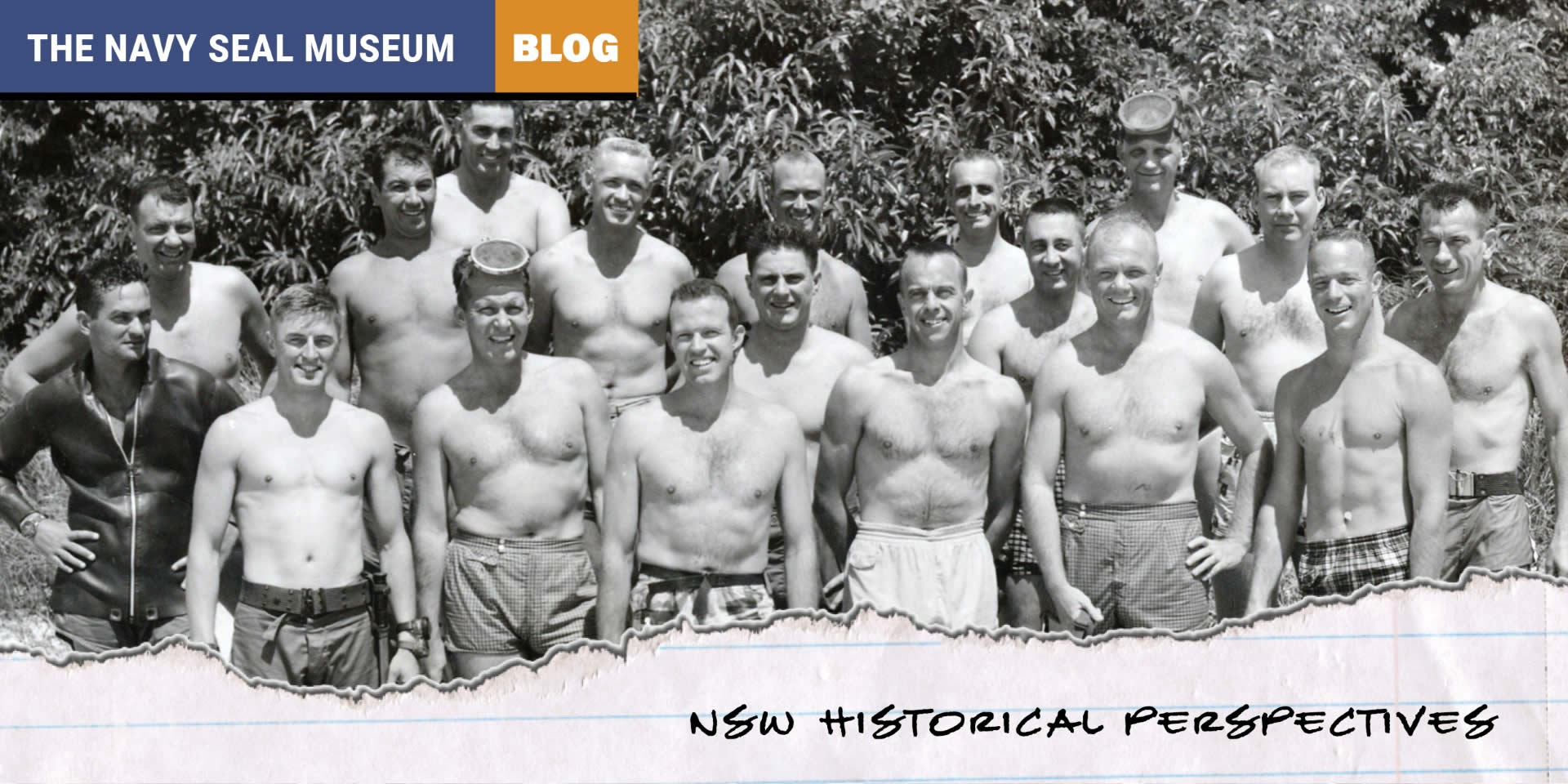
Combatant Submersibles – Part II
A Photographic History: 1947 – 1960
The Winter 2022 edition of Fire in the Hole outlined the World War II period surrounding development and employment of combatant submersibles for maritime special operations. This story outlines a chronological summary of swimmer vehicle developments in the Underwater Demolition Teams; focused on foreign and domestic efforts between 1947 and the early 1960s.
Throughout the 1950s and 1960s, the UDTs had a particular fascination with enabled swimmer-assist submersibles. Part II provides a photo history derived from a report sponsored by Naval Operations Support Group, Pacific (today Naval Special Warfare Group ONE). It was promulgated in June 1967 as “NOSGPAC RDT&E Project 501.” Photo scans for this story were made from a paper copy of this report. Where possible, better photographs have been provided. Once classified CONFIDENTIAL, the report has long since been declassified.
The NOSGPAC report concluded that a number of studies had been made and reports published “on the general subject of combatant submersibles.” The project report stated that such studies had considered the various missions and tasks performed by combat swimmers, and that these largely defined attributes judged to be desirable in a combatant submersible. It went on to say that [no other] studies involved: “…a comprehensive compilation or tabulation of information on all known combatant swimmer delivery vehicles.” Also, that: “…[no] studies had been written from the operational viewpoint, [nor addressed] what had already been accomplished; including many practical considerations in maintenance, repair, and employment.” The objective of the report was to correct that situation, which contained 211 pages of extensive operational and technical information. Suffice to say it was an invaluable resource that now provides fascinating look at military and industry responses to UDT’s craving for submersibles.
During the post-World War II period, the UDTs on the east coast were under the leadership of Commander Francis Douglas “Red Dog” Fane. It was Fane that worked with Dr. Chris Lambertsen to bring about combat-diving capabilities to the UDTs. This began in 1947 with introduction of the Lambertsen Amphibious Respiratory Unit (LARU), a closed-circuit, pure-oxygen rebreathing diving apparatus, and the British submersible canoe “Sleeping Beauty.” These capabilities were derived from Office of Strategic Services Maritime Unit (OSS MU) use during World War II. Dr. Lambertsen was inventor of the LARU and served as the OSS MU medical officer and combat swimmer-diver trainer.
The LARU and “Sleeping Beauty” began an intense and long-standing effort by the UDTs to develop improved combatant capabilities focused on submersibles. During the 1950s, many design, development, and experimental activities were undertaken. Most were miserable failures, but all played a major role expanding the knowledge base, and eventually acquiring an operationally worthy Swimmer (later SEAL) Delivery Vehicle (SDV) during the mid-1960s as will be seen.
Testing with the Convair Model 14 SDV began my long-term relationship with SDVs. In the summer of 1967, I took a detachment of men from UDT-21, UDT-22, and SEAL Team TWO to Naval Operations Support Group ONE in San Diego for six months to participate as human-test subjects in an SDV diver-performance experimentation program sponsored by the Office of Naval Research. The west coast needed assistance for various reasons; including a paucity of men because of Vietnam. The purpose of our testing was to determine the effects of cold water on diver performance during prolonged expose during SDV missions lasting up to four-hours duration. The results of testing demonstrated that there were no human-performance operational issues encountered.
The average annual water temperature along the coast of San Diego is 63°F. By seasons: Winter 59°F, Spring 61°F, Summer 67°F, and Autumn 66°F. The results of our testing and those conducted by others resulted int the operational fielding of the MK VII SDV, which was the designation given by the Navy to the service-approved version of the Convair Model 14.
Italian SLC “Pig” (1939-1943). The Italian SLC (initials of “slow-speed torpedo” in Italian) was a two-man submersible capable of making 2.2 knots with an operating range of 10 miles. It was also highlighted in the Part I story. The “Pig,” was used operationally and successfully during World War II. The submersible was brought to the United States for trials with the UDTs in the mid-1950s. This photograph of the SLC was taken at the Naval Amphibious Base, Little Creek, Virginia during UDT trials in the Chesapeake Bay.
Aerojet Experimental Pedal-Powered SPU (1952). A pioneering petal-powered attempt by Aerojet General Corporation in the field of swimmer propulsion. The weight and dimensions of the Swimmer Propulsion Unit (SPU) are not known, but the photo provides a perspective. The vehicle had no instrumentation. At 100 rpm, the device was capable of about three knots speed. The maximum practical range was estimated to be about three NM. Adding payload would have been problematic.
Aerojet Mark I SPU (1952). A one-man, pedal-powered SPU. It was a cleaned-up version of the previously built experimental version. The Mark I designation was given by Aerojet. A final development in 1952 resulted in the SPU being fitted with a body fairing to reduce drag.

